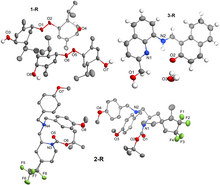
Abstract
Using the Cambridge Structural Database along with the analysis and visualization programs provided by the Cambridge Crystallographic Data Centre, we identified three organic small molecules with good diffraction data but poorly refined (R1 > 40%) structures. These structures were used as teaching examples in an introductory chemical crystallography course for an activity in which students were asked to identify the errors in the original structure solution or refinement processes. The structures were redetermined, yielding R1 values between 4.04 and 7.04%. In two cases, two chemically equivalent but crystallographically distinct molecules were found in the asymmetric unit, only one of which had been refined in each of the originally published CIFs. In the third case, a false solution found by SHELXS direct methods was corrected and the structure was refined as a hydrated tautomer of what had been originally reported. The identification of this tautomer was supported by theoretical calculations.